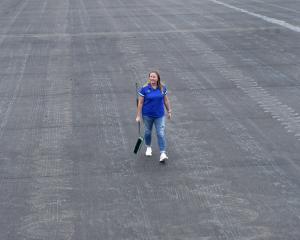
The troopship Tofua, quite literally, brought the reality of modern war home to Dunedin. While other ships had brought home ill and wounded from the small-scale campaign in Samoa, and a few Gallipoli wounded had made it back to New Zealand on other vessels Tofua — and just behind it Willochra — were the first two vessels dedicated to bringing home the maimed and damaged of the Dardenelles.
Tofua arrived off Port Chalmers on the afternoon of October 26, 1915. Reported aboard were 410 soldiers — six cot cases, 69 hospital cases, and 335 "others". The cot case — it turned out Trumpeter Hall was the only one — was examined by a medical board and taken to hospital, before Tofua steamed through the harbour to dock at Rattray St. Soldiers and civilians alike were warned that no-one was to disembark before Wednesday morning, and anxious relatives were given tickets to an enclosure on the wharf.
That morning the ODT editorialised: "The fact that Dunedin has been selected as the port of arrival and disembarkation of two troopships bringing home large contingents of soldiers can hardly fail to impress this southern community with a deeper sense of the need for the unflagging continuance of the recruiting process as long as there are depleted ranks to be filled."
But time and tide combined to make Tofua late to arrive, derailing plans for a lunchtime civic reception.
"Her arrival was greeted with hearty cheers, which were responded to with surprising lustiness by invalids on the troopship," the ODT reported.
Those disembarking included Private John Connor, of Arrowtown, home minus his left arm, Pte G. Drummond, of Tapanui, who had been invalided home with enteric fever, and Pte W. Towns, of Dunedin, who had had his elbow shattered by a Turkish bullet but also fallen foul of appendicitis.
Sergeant H. A. Foote, of Dunedin, was recovering from typhoid and hoped to return to the front soon. Pte R. E. N. Wilson, of Otautau, had his arm in a sling after "a disastrous time" in an attack on Hill 971 (the highest point of the Sari Bair Ridge) and was expected to take 18 months to recover.
A concert was hastily arranged for that evening, at which singers and an orchestra entertained the troops, and the civic reception was moved to 10am the next day.
The troops were taken to the Drill Hall in Kensington by car, driven by volunteer motor vehicle owners.
There, Dunedin Mayor James Clark said: "your work on the battlefield has inspired us who cannot go to do our little bit for the Empire, and now that you are with us again we will try to do our duty to you as you did yours to us — ungrudgingly."
Defence Minister James Allen — also the MP for the rural Otago electorate of Bruce — told the audience the soldiers had done their duty on many a bloody field.
It was, he said, "better to die honourably, fighting for the freedom of women and the homes of the Empire (rather) than live an unhonoured life with the eternal memory that the call to duty had not been answered."
Quite what the troops made of that is anyone’s guess. With that, the passengers on Tofua went their separate ways ... but they were followed by hundreds more passengers on Willochra the next week, and the maudlin procession of troop ships laden with wounded was to continue for several more years.












